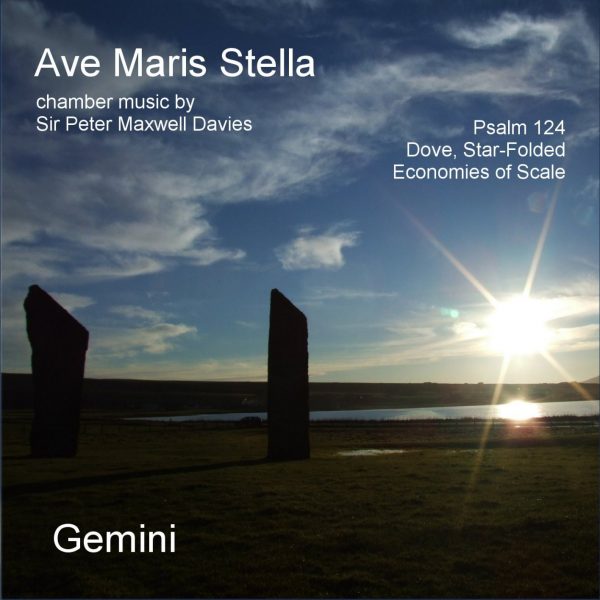American Record Guide
Of the four chamber works on this program, the main event is the nearly half-hour Ave Maris Stella (1975), a sextet for flute(s), clarinet, viola, cello, marimba, and piano. Taking off from the plainchant, Davies produces (for the first time) one of his “magic squares”, a serial matrix generating both the piece’s pitch and rhythmic material. Despite its diatonic roots, the perpetual variation concept and 70s chromatic serialism make imposing demands on listener’s patience and attention, though we are told in the notes that the compositional processes involved are “of little concern to anyone but the composer and those who concern themselves professionally with such matters”. This suggests a “just let the music wash all over you” listening strategy, which may be enough to satisfy some, but I always have preferred more substantial involvement in the music I listen to. The piece does break into nine easily audible sections, and Metier thoughtfully offers track divisions. People who don’t care about such things could still appreciate the sheer virtuosity involved. This seems enough for the composer’s many fans and made him “Master of the Queen’s Music” in 2004, and what could be more impressive than his dramatic Orkney Islands isolation and his huge catalog? Audiences have changed since the 70s, but if you are nostalgic for those times you will certainly value this excellent performance.
Turning to the remaining pieces, the contemporaneous and considerably less complicated Psalm 124 (1974), also built on Early Music material, is described by the composer as a “Motet for Instrumental Ensemble after [medieval and renaissance composers] David Peebles, John Fethy, and an Anonymous Scottish Source”. Davies transforms and superimposes melodic lines from this music with counterpoint built with what one of my teachers liked to call “dirty harmony”. The piece’s three sections have brief interludes from a solo guitar that transform the previous material.
Dove, Star-Folded (2000) is a brief work for string trio in memory of scholar Sir Steven Runciman, and is based on a Greek Byzantine hymn (apparently Sir Steven’s object of study). The piece, essentially a more traditional theme and variations, alternates somber treatments of the hymn with livelier passages. Economies of Scale (2002), for clarinet, violin, cello, and piano, was commissioned by Nobel Laureate economist Sir James Mirrlees. Opening with a bombastic explosion, the piece is primarily angular and “difficult”—more chromatic and old-fashioned-modernist than anything else on the program—yet it is the most recent work here.
@divineartrecordingsgroup
A First Inversion Company
Registered Office:
176-178 Pontefract Road, Cudworth, Barnsley S72 8BE
+44 1226 596703
Fort Worth, TX 76110
+1.682.233.4978












